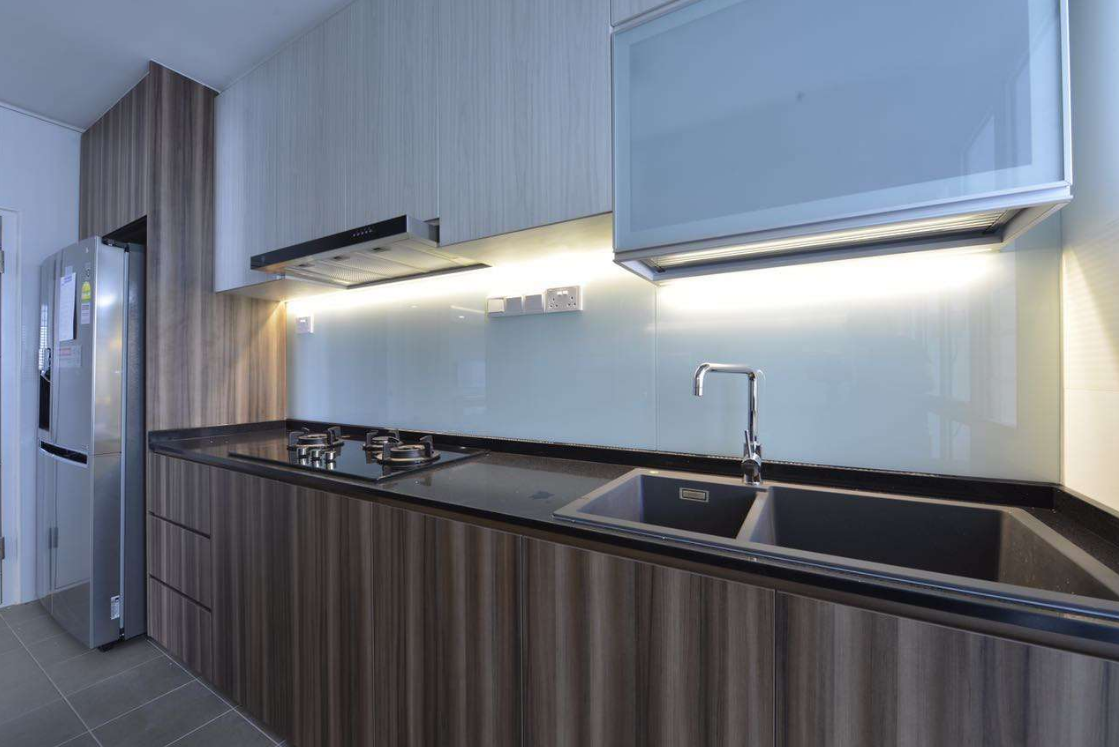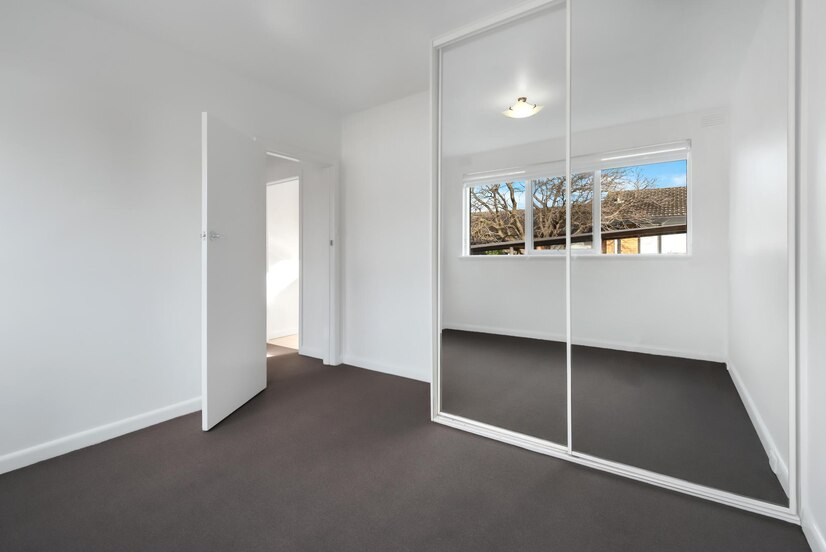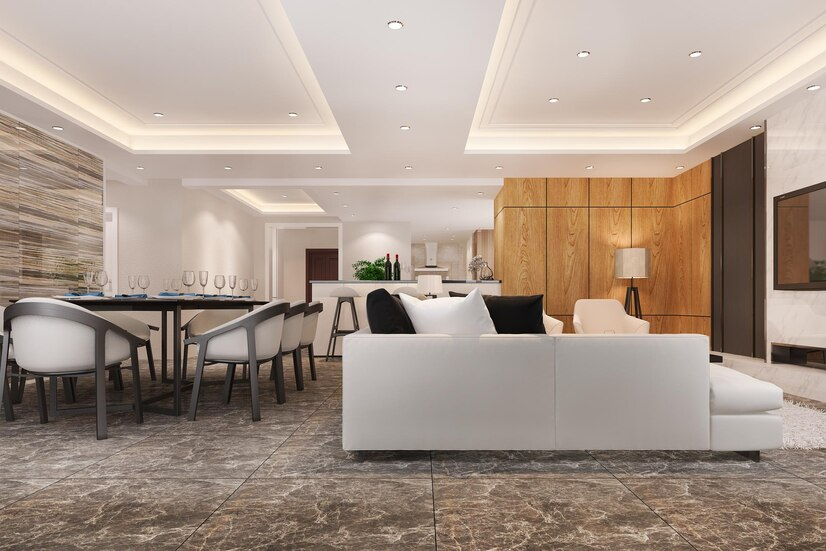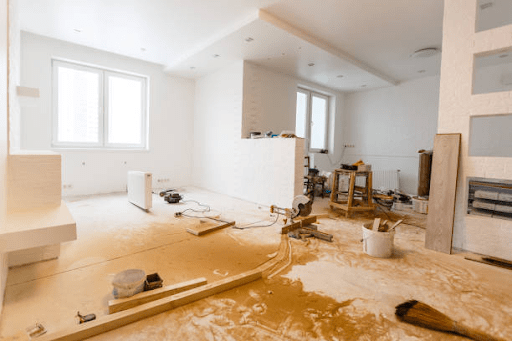
One of the most common challenges homeowners face is dealing with limited space in small kitchens. Efficient kitchen cabinet design is key to overcoming this obstacle, as it maximizes every inch of available space and significantly enhances functionality. Smart kitchen cabinet designs incorporate innovative storage solutions, such as pull-out shelves, corner cabinets, and vertical storage, ensuring that even the smallest kitchens are organized, stylish, and highly functional.
Auralite Pte Ltd specializes in creating bespoke kitchen cabinet designs tailored to the unique needs of small kitchens. With years of experience and a passion for innovation, our team of experts is dedicated to helping you transform your cramped kitchen into an efficient and pleasant space. Our designs are not only practical but also stylish, ensuring your kitchen is both functional and visually appealing.
The Basics of Kitchen Cabinet Design
Kitchen cabinet design refers to the planning and creation of storage solutions within a kitchen space. It encompasses the selection, arrangement, and customization of cabinets to ensure they meet the practical needs of the kitchen while also complementing its overall aesthetic. Efficient kitchen cabinet design is crucial for maximizing storage, ensuring ease of access to kitchen essentials, and maintaining an organized and functional workspace. Well-designed cabinets can transform a cluttered, inefficient kitchen into a streamlined, enjoyable area for cooking and meal preparation.
Key Considerations for Small Kitchens
1. Space Constraints
Small kitchens present unique challenges due to their limited square footage. Effective cabinet design must prioritize the optimal use of available space, incorporating features like vertical storage, pull-out shelves, and corner cabinets to maximize storage capacity without overwhelming the area.
2. Functional Requirements
In a small kitchen, every element needs to serve a purpose. Cabinets should be designed to facilitate the kitchen’s primary functions, such as cooking, cleaning, and storing food and utensils. This includes thoughtful placement of cabinets and drawers to ensure easy access and efficient workflow.
3. Aesthetic Preferences
Despite space limitations, style should not be compromised. The design of kitchen cabinets should reflect the homeowner’s taste and complement the overall look of the kitchen. Choosing the right materials, colors, and finishes can create a cohesive and inviting space that feels larger and more welcoming.
Space-Saving Kitchen Cabinet Designs
One of the most effective ways to maximize space in a small kitchen is by utilizing vertical storage solutions. Tall cabinets that extend to the ceiling make excellent use of wall space that might otherwise be wasted. This approach not only provides additional storage for seldom-used items but also draws the eye upward, creating the illusion of a larger space. The benefits of vertical storage in small kitchens include increased storage capacity and a more organized and clutter-free environment.
- Pull-Out Cabinets and Drawers
Pull-out cabinets and drawers are a game-changer for small kitchen cabinet design. These features allow for easy access to items stored in the back, making the most of every inch of available space. Pull-out shelves, spice racks, and trash bins can be customized to fit various needs and preferences. In small kitchens, practical uses include storing pots and pans, organizing pantry items, and keeping cleaning supplies out of sight but within easy reach.
- Corner Cabinet Solutions
Corners are often underutilized in kitchen designs, but innovative solutions can turn these spaces into valuable storage areas. Lazy Susans and corner pull-outs are two popular options for maximizing corner cabinets. A Lazy Susan allows for easy rotation of stored items, while corner pull-outs provide smooth access to hard-to-reach areas. These solutions ensure that no space goes unused, enhancing both the functionality and efficiency of the kitchen.
- Multi-Functional Cabinets
In a small kitchen, multi-functional cabinets can significantly enhance utility. Cabinets with built-in appliances, such as microwave ovens or dishwashers, save counter space and streamline the kitchen’s layout. Fold-out tables and cutting boards integrated into cabinet designs offer additional workspace when needed and can be neatly tucked away when not in use. These versatile options contribute to a more efficient and flexible kitchen environment.
- Open Shelving Options
Open shelving is a popular trend that can be particularly beneficial in small kitchens. The pros of open shelving include easy access to frequently used items, an airy and open feel, and the opportunity to display attractive dishware. However, it also has its cons, such as the potential for a cluttered look if not maintained properly. To keep open shelves organized and tidy, it’s essential to regularly declutter and thoughtfully arrange items, using matching containers and cohesive color schemes to create a harmonious appearance.
Innovative Design Ideas for Small Kitchens
Minimalist cabinet designs, characterized by sleek lines and lighter colors, are ideal for small kitchens, creating a clean and spacious look. Glass-front cabinets add an airy feel and stylish display options, while mirrored cabinet doors enhance light and give the illusion of a larger space. Together, these elements can transform a small kitchen into an elegant and functional area that feels much more expansive.
To further optimize space, hidden storage solutions are crucial. Concealed cabinets and built-in compartments, such as spice racks, maximize storage while keeping the kitchen clutter-free. These innovative design ideas ensure every inch of the kitchen is utilized efficiently, blending practicality with style. By integrating these smart solutions, small kitchens can achieve a perfect balance of functionality and aesthetic appeal.
Materials and Finishes for Small Kitchen Cabinets
Selecting the appropriate materials for small kitchen cabinet designs is crucial for both durability and aesthetics. Durable and lightweight materials, such as plywood, MDF (Medium-Density Fiberboard), and metal, are excellent choices. Plywood offers strength and resistance to warping, while MDF provides a smooth surface for painting but may not be as durable over time. Metal cabinets are incredibly durable and offer a sleek, modern look, though they can be more expensive and prone to dents.
Best Finishes for Small Kitchens
The choice of finish can significantly impact the perception of space in a small kitchen. High-gloss finishes are excellent for reflecting light, making the kitchen appear larger and brighter. They are also easy to clean, though they may show fingerprints more easily. Matte finishes provide a modern, sophisticated look and are better at hiding imperfections, but they might make the space feel smaller if not paired with the right colors and lighting.
Colour Choices for Small Spaces
In small kitchens, color choices play a vital role in creating an open and inviting atmosphere. Light and neutral colors, such as white, beige, and soft pastels, can make the space feel larger and more airy. Incorporating bold accents, like a colorful backsplash or vibrant cabinet handles, adds character and visual interest without overwhelming the space. This balance of light colors with bold accents can create a dynamic yet cohesive design that enhances the functionality and style of small kitchens.
Practical Tips for Implementing Smart Cabinet Designs
- Planning Your Kitchen Layout
A well-thought-out kitchen layout is essential for maximizing space and ensuring functionality. Start by assessing your kitchen’s dimensions and identifying key areas for storage, cooking, and cleaning. Consider the work triangle principle, which optimizes the placement of the sink, stove, and refrigerator to enhance workflow. Utilize vertical and corner spaces effectively and incorporate smart storage solutions like pull-out shelves and hidden compartments to keep your kitchen organized and clutter-free.
- Hiring a Professional
Working with a professional like Auralite Pte Ltd can significantly enhance the design and functionality of your kitchen. Professionals bring expertise in optimizing small spaces and can offer customized solutions tailored to your specific needs and preferences. They can help you avoid common pitfalls, ensure quality craftsmanship, and create a cohesive design that blends practicality with style.
- Maintenance and Upkeep
Maintaining the longevity of your kitchen cabinets requires regular care and attention. Follow cleaning and care guidelines specific to the materials and finishes of your cabinets. For example, high-gloss finishes may need gentle cleaning with non-abrasive products to prevent scratches, while wood cabinets may benefit from periodic polishing to maintain their luster. Regularly check for signs of wear and address any issues promptly to keep your kitchen looking its best for years to come.
Transform your Small Kitchen with Smart Cabinet Designs
We’ve explored key strategies to maximize space in small kitchens through smart cabinet designs. Vertical storage solutions, pull-out cabinets, and minimalist multi-functional designs can dramatically enhance both the functionality and aesthetics of compact kitchen spaces. Additionally, selecting the right materials and finishes is crucial to creating a kitchen that is both stylish and efficient.
If you’re looking to transform your small kitchen, consider implementing these smart kitchen cabinet designs. Auralite Pte Ltd specializes in creating bespoke kitchen renovations that optimize space and functionality. With their expertise and innovative solutions, they can help you achieve a stylish and efficient kitchen. Contact us today for a consultation and visit our website to learn more about their comprehensive renovation services.









